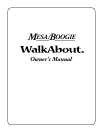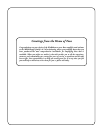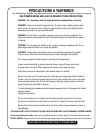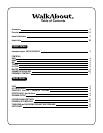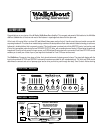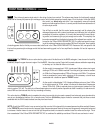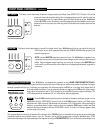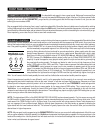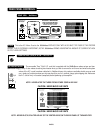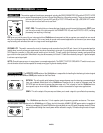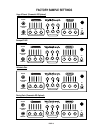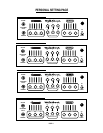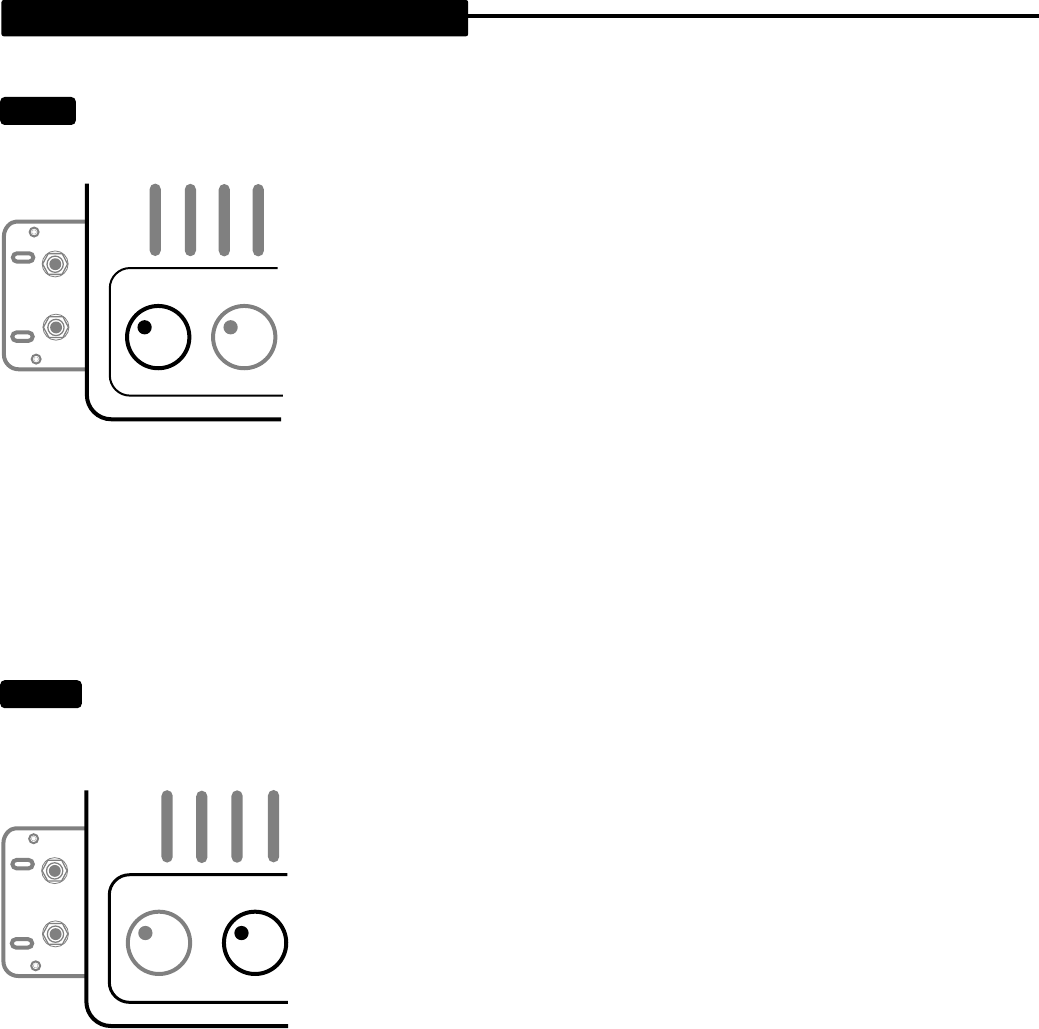
FRONT PANEL CONTROLS:
(Continued)
GAIN:
This control determines the overall character of the input sensitivity. The lower regions of the control (below 12:00) lend
greater headroom and provide a scooped, brighter personality. The upper harmonics come through more prominently in this area of
the control making the top end sound more transparent and sweet. This region is especially
useful for funkier stuff when thumbing is in order. It keeps the rubber- band feel intact in the
lows and mids while voicing the snap just high enough to avoid harshness, or the dreaded
“gak” when the G string is plucked.
As the GAIN control is increased past 12:00 a richer, more “well-rounded” voice becomes
dominant and headroom starts to diminish in increments until eventually, a tube overdrive
sound appears as the 12AX7 input tube is driven into saturation.
The region between 12:00 and 2:30 is where the classic, warm tube sound resides and
within this narrow band you will discover a world of tone. Tiny increments here produce
subtle, but important differences in the attack characteristic which in turn, feel like changes in the time domain. By experimenting with
the amount of gain, you can actually voice the amp to feel as if it bounces just ahead of the groove - or lays back a little deeper to
produce a more Fatback feel. The difference in attack and sustain produces striking results as to how the bassist - and in fact the
whole band - perceives things in the time domain.
BASS:
This control is responsible for the basic mix of low frequencies in the tube pre-amp. As mentioned earlier in the Helpful
Hints section, the BASS control is an active shelving type as opposed to a passive style control. This means that a center Q point has
been chosen and this control allows you to either boost or cut that frequency. This control differs from the low band of the PARAMET-
RIC in that it has a broader Q point with a more gentle ramp as opposed to the PARAMETRICS’
narrow Q that is used with a separate GAIN control.
The BASS control is actually a gain and frequency control all rolled into one with the Q
center at 55Hz and harmonics in both low and high directions are affected because of its
broader band nature. As the control is increased past 12:00 there is a 6db per octave rise in
gain with the frequency topping out at 321Hz. With 12:00 straight-up representing “flat” (a
no boost/no cut setting).
As the BASS control is dialed below 12:00, 55Hz and all associated harmonics are reduced
and eventually notched completely out of the signal. Conversely, there is a 6db per octave
cut beginning at 55Hz going down to 20Hz where the shelving ends with a
cut gain
of -20db as the control approaches 7:30 (off).
This type of broad band, active rotary control makes it possible to achieve bass characteristics far beyond that of a conventional
passive type control. It can increase the low end to an almost absurd level and with a flick of the wrist, dip it to near transitor radio
skinniness. Needless to say, with any control this powerful a certain amount of finesse must be applied to achieve musical results. Be
especially mindful of this when using the 3 Band Semi-Parametric in conjunction with the BASS control.
PAGE 4
INSTRUMENT
INPUTS
PASSIVE
ACTIVE
GAIN BASS
FOUR - STAGE VACUUM TUBE
INSTRUMENT
INPUTS
PASSIVE
ACTIVE
GAIN BASS
FOUR - STAGE VACUUM



